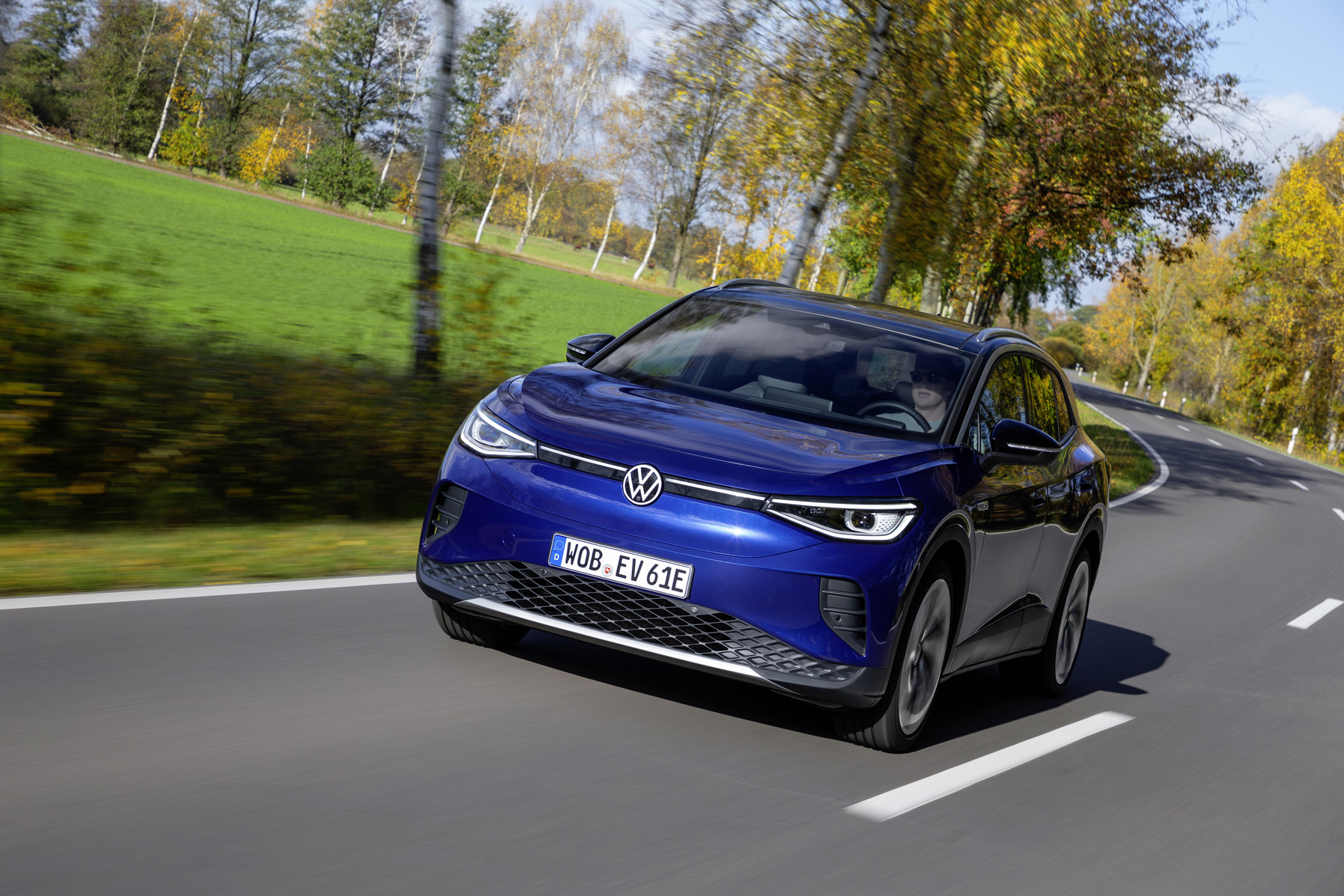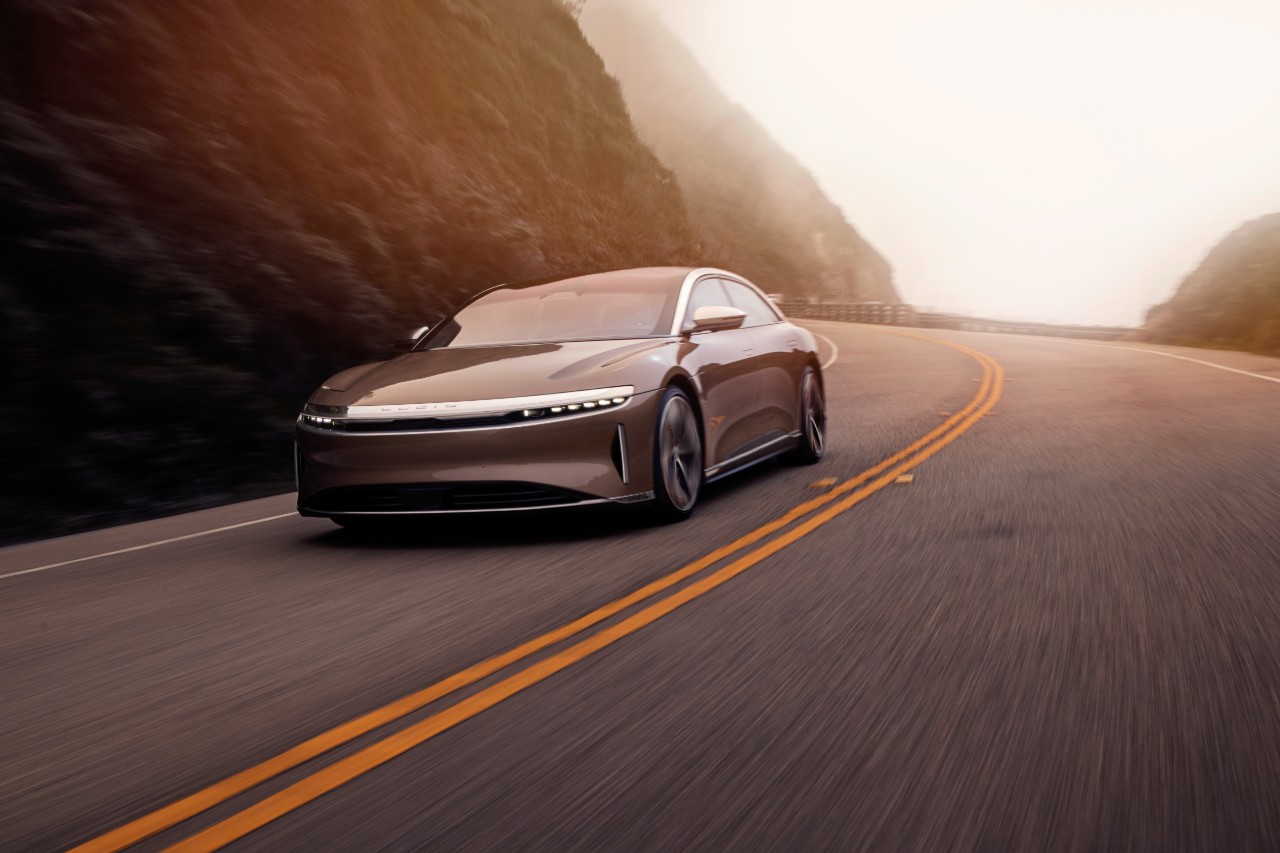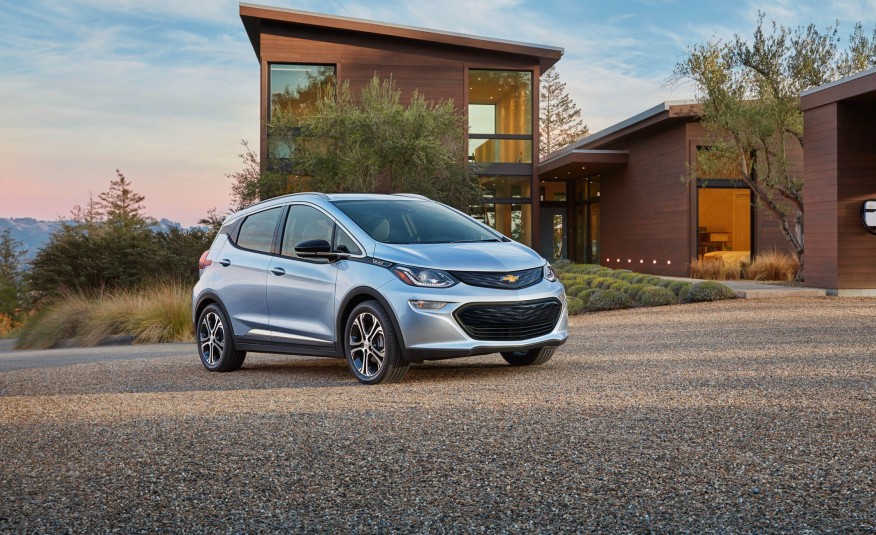

News
Cars.com names its Top Picks for EVs: Volkswagen, Hyundai, Lucid, and Chevrolet
Cars.com released its Top Picks list for 2022 model year Electric Vehicles, with Volkswagen, Hyundai, Lucid, and Chevrolet taking the top spots in categories such as Value, Family, Luxury, and Commuters.
The winners managed to be chosen in a field of over 30 highly popular and notable EVs that are all worthy of recognition in their own ways. With the recent explosion of the EV sector, more consumers are considering electric powertrains due to their lack of maintenance and other advantages, like not having to pay upwards of $7 for a gallon of gas.
“We have been sharing news and research on EVs ever since we reviewed our first Nissan Leaf over a decade ago,” Jenni Newman, Cars.com’s editor-in-chief, said. “As consumer interest for EVs grows due to rising gas prices and other current events, we know shoppers have questions about what EV options are available, how much they cost, what the ownership experience is like, and more. Our 2022 EV Buying Guide and Top Picks help shoppers answer those questions and cut through the noise to find the right EV for their lifestyle.”
Value – 2022 Volkswagen ID.4
As the average price of an EV costs $60,000 in today’s market, the Volkswagen ID.4 starts at just $41,669 including destination fees. It offers state-of-the-art features like LED headlights, heated front seats, a heated steering wheel, a 10-inch touchscreen navigation system, wireless device charging, Volkswagen’s suite of active-safety and driver-assist features, and Apple CarPlay, for those who really need it. Android Auto is also available. The ID.4’s also comes with three years of unlimited 30-minute DC fast-charging sessions at any Electrify America station, and it’s free.
Volkswagen’s ID.4 (Credit: Volkswagen)
Families – 2022 Hyundai Ioniq 5
A compact SUV with a roomy interior, the 2022 Hyundai Ioniq 5 has a sizeable backseat that slides forward and backward, so it’s ideal for car seats. The Ioniq 5 starts at $44,895, and the top trim level has plenty of discreet features that will make traveling with kids a little more enjoyable. The panoramic moonroof comes with a retractable sunshade. It also has a “composed ride on highways” that stands out, according to Cars.com, which tipped their cap to the Ioniq 5 for defying a common shortcoming in EVs due to a lack of combustion engine that drowns out road noise.
Credit: Hyundai
Luxury – 2022 Lucid Air
The Lucid Air has already captured the attention of several publications, winning awards that have named it the Best EV of 2022 elsewhere. It’s a wonderful vehicle: fast, luxurious, spacious, and clean. Lucid has a sizeable price tag on the Air’s premier model: the Dream Edition: $170,000. As it is with many other industries, you get what you pay for. The Air has cargo space, performance, a responsive and intuitive multimedia system, with an interior that would be pictured next to the word “luxury” in the dictionary. MotorTrend gave the Air plenty of kudos during their initial drives of the Air Dream Edition last year, and not much has changed, apparently.
Credit: Lucid Motors
Commuters – 2022 Chevrolet Bolt EV and EUV
The Chevrolet Bolt EV is a head-scratching choice for the Commuter category, as the vehicle has been on a production halt for several months after battery fires and GM built less than 30 of them in Q4 2021. While the Bolt EV will likely come back with no issues after a thorough investigation between GM and its battery suppliers, the EPA-estimated 247 miles of range and a $34,495 starting price gives those looking for a bargain EV this option. General Motors has high ambitions for its EV program, and the Bolt is a great car to build a foundation upon. However, there are other competitive options, and they’ll give you more range and performance, but the Bolt’s price tag alone makes it a worthy choice.
Credit: General Motors
I’d love to hear from you! If you have any comments, concerns, or questions, please email me at joey@teslarati.com. You can also reach me on Twitter @KlenderJoey, or if you have news tips, you can email us at tips@teslarati.com.

Elon Musk
Elon Musk and Tesla AI Director share insights after empty driver seat Robotaxi rides
The executives’ unoccupied tests hint at the rapid progress of Tesla’s unsupervised Robotaxi efforts.

Tesla CEO Elon Musk and AI Director Ashok Elluswamy celebrated Christmas Eve by sharing personal experiences with Robotaxi vehicles that had no safety monitor or occupant in the driver’s seat. Musk described the system’s “perfect driving” around Austin, while Elluswamy posted video from the back seat, calling it “an amazing experience.”
The executives’ unoccupied tests hint at the rapid progress of Tesla’s unsupervised Robotaxi efforts.
Elon and Ashok’s firsthand Robotaxi insights
Prior to Musk and the Tesla AI Director’s posts, sightings of unmanned Teslas navigating public roads were widely shared on social media. One such vehicle was spotted in Austin, Texas, which Elon Musk acknowleged by stating that “Testing is underway with no occupants in the car.”
Based on his Christmas Eve post, Musk seemed to have tested an unmanned Tesla himself. “A Tesla with no safety monitor in the car and me sitting in the passenger seat took me all around Austin on Sunday with perfect driving,” Musk wrote in his post.
Elluswamy responded with a 2-minute video showing himself in the rear of an unmanned Tesla. The video featured the vehicle’s empty front seats, as well as its smooth handling through real-world traffic. He captioned his video with the words, “It’s an amazing experience!”
Towards Unsupervised operations
During an xAI Hackathon earlier this month, Elon Musk mentioned that Tesla owed be removing Safety Monitors from its Robotaxis in Austin in just three weeks. “Unsupervised is pretty much solved at this point. So there will be Tesla Robotaxis operating in Austin with no one in them. Not even anyone in the passenger seat in about three weeks,” he said. Musk echoed similar estimates at the 2025 Annual Shareholder Meeting and the Q3 2025 earnings call.
Considering the insights that were posted Musk and Elluswamy, it does appear that Tesla is working hard towards operating its Robotaxis with no safety monitors. This is quite impressive considering that the service was launched just earlier this year.
Elon Musk
Starlink passes 9 million active customers just weeks after hitting 8 million
The milestone highlights the accelerating growth of Starlink, which has now been adding over 20,000 new users per day.

SpaceX’s Starlink satellite internet service has continued its rapid global expansion, surpassing 9 million active customers just weeks after crossing the 8 million mark.
The milestone highlights the accelerating growth of Starlink, which has now been adding over 20,000 new users per day.
9 million customers
In a post on X, SpaceX stated that Starlink now serves over 9 million active users across 155 countries, territories, and markets. The company reached 8 million customers in early November, meaning it added roughly 1 million subscribers in under seven weeks, or about 21,275 new users on average per day.
“Starlink is connecting more than 9M active customers with high-speed internet across 155 countries, territories, and many other markets,” Starlink wrote in a post on its official X account. SpaceX President Gwynne Shotwell also celebrated the milestone on X. “A huge thank you to all of our customers and congrats to the Starlink team for such an incredible product,” she wrote.
That growth rate reflects both rising demand for broadband in underserved regions and Starlink’s expanding satellite constellation, which now includes more than 9,000 low-Earth-orbit satellites designed to deliver high-speed, low-latency internet worldwide.
Starlink’s momentum
Starlink’s momentum has been building up. SpaceX reported 4.6 million Starlink customers in December 2024, followed by 7 million by August 2025, and 8 million customers in November. Independent data also suggests Starlink usage is rising sharply, with Cloudflare reporting that global web traffic from Starlink users more than doubled in 2025, as noted in an Insider report.
Starlink’s momentum is increasingly tied to SpaceX’s broader financial outlook. Elon Musk has said the satellite network is “by far” the company’s largest revenue driver, and reports suggest SpaceX may be positioning itself for an initial public offering as soon as next year, with valuations estimated as high as $1.5 trillion. Musk has also suggested in the past that Starlink could have its own IPO in the future.
News
NVIDIA Director of Robotics: Tesla FSD v14 is the first AI to pass the “Physical Turing Test”
After testing FSD v14, Fan stated that his experience with FSD felt magical at first, but it soon started to feel like a routine.

NVIDIA Director of Robotics Jim Fan has praised Tesla’s Full Self-Driving (Supervised) v14 as the first AI to pass what he described as a “Physical Turing Test.”
After testing FSD v14, Fan stated that his experience with FSD felt magical at first, but it soon started to feel like a routine. And just like smartphones today, removing it now would “actively hurt.”
Jim Fan’s hands-on FSD v14 impressions
Fan, a leading researcher in embodied AI who is currently solving Physical AI at NVIDIA and spearheading the company’s Project GR00T initiative, noted that he actually was late to the Tesla game. He was, however, one of the first to try out FSD v14.
“I was very late to own a Tesla but among the earliest to try out FSD v14. It’s perhaps the first time I experience an AI that passes the Physical Turing Test: after a long day at work, you press a button, lay back, and couldn’t tell if a neural net or a human drove you home,” Fan wrote in a post on X.
Fan added: “Despite knowing exactly how robot learning works, I still find it magical watching the steering wheel turn by itself. First it feels surreal, next it becomes routine. Then, like the smartphone, taking it away actively hurts. This is how humanity gets rewired and glued to god-like technologies.”
The Physical Turing Test
The original Turing Test was conceived by Alan Turing in 1950, and it was aimed at determining if a machine could exhibit behavior that is equivalent to or indistinguishable from a human. By focusing on text-based conversations, the original Turing Test set a high bar for natural language processing and machine learning.
This test has been passed by today’s large language models. However, the capability to converse in a humanlike manner is a completely different challenge from performing real-world problem-solving or physical interactions. Thus, Fan introduced the Physical Turing Test, which challenges AI systems to demonstrate intelligence through physical actions.
Based on Fan’s comments, Tesla has demonstrated these intelligent physical actions with FSD v14. Elon Musk agreed with the NVIDIA executive, stating in a post on X that with FSD v14, “you can sense the sentience maturing.” Musk also praised Tesla AI, calling it the best “real-world AI” today.








